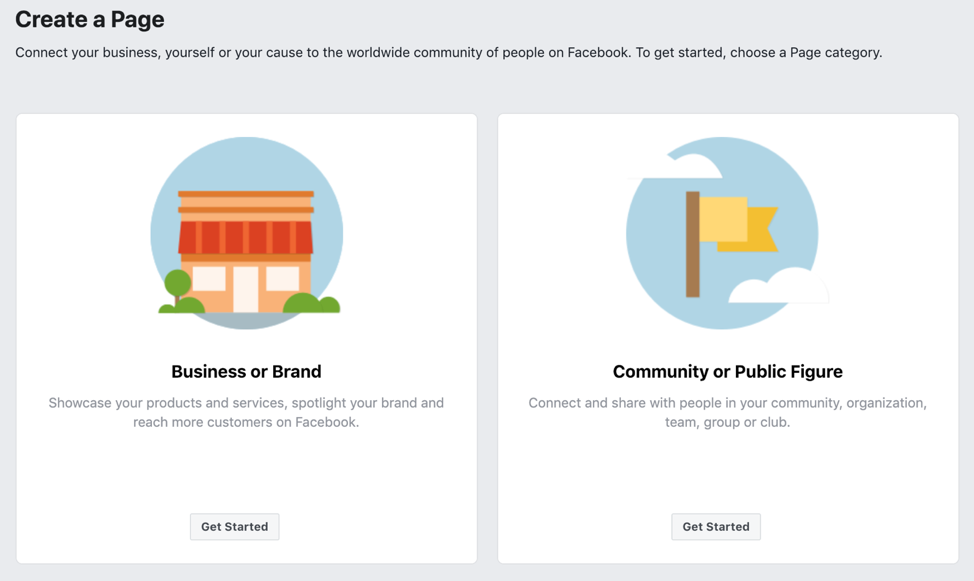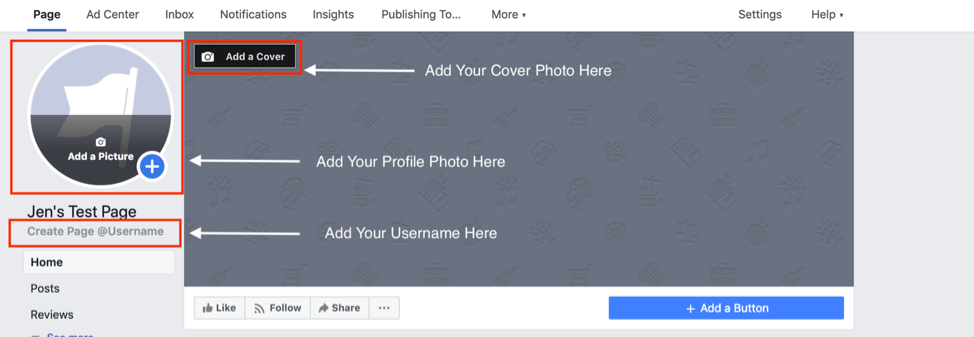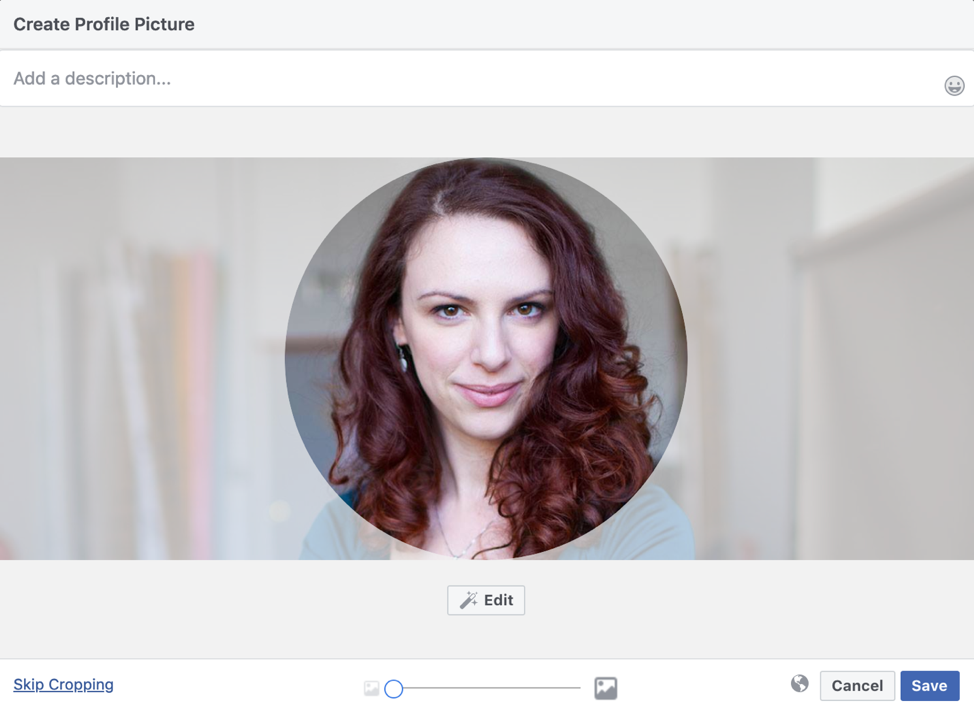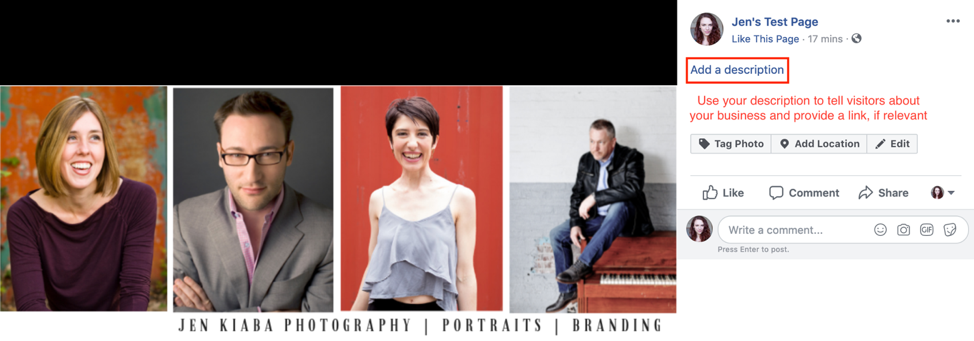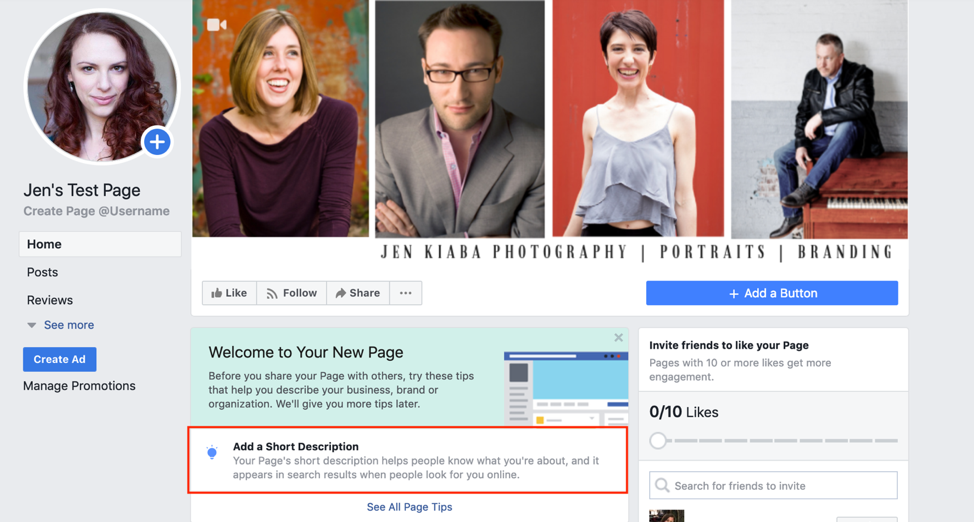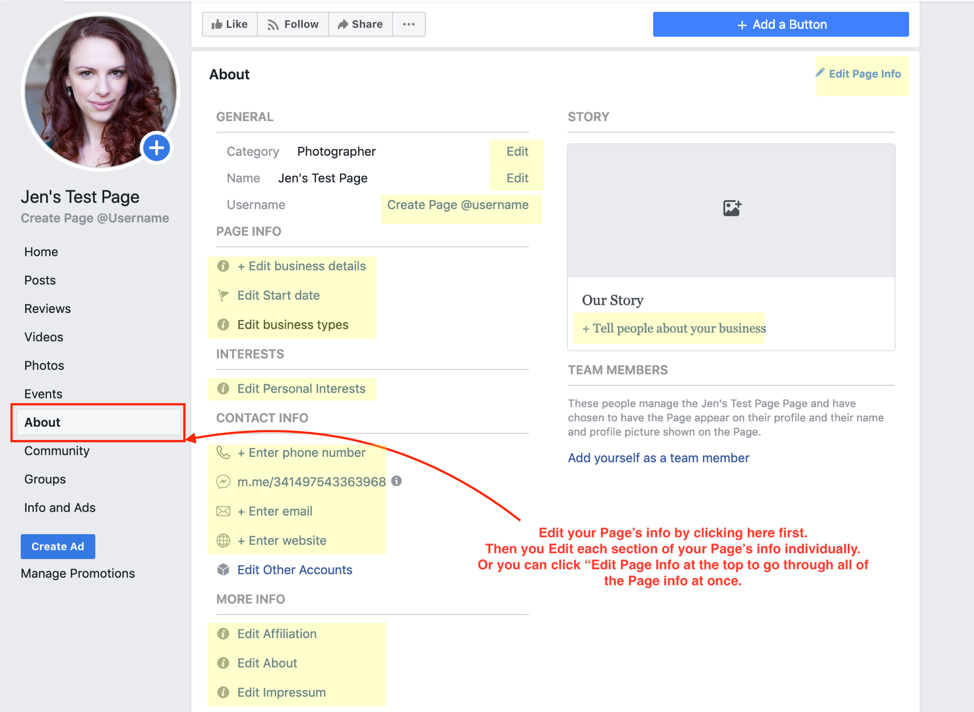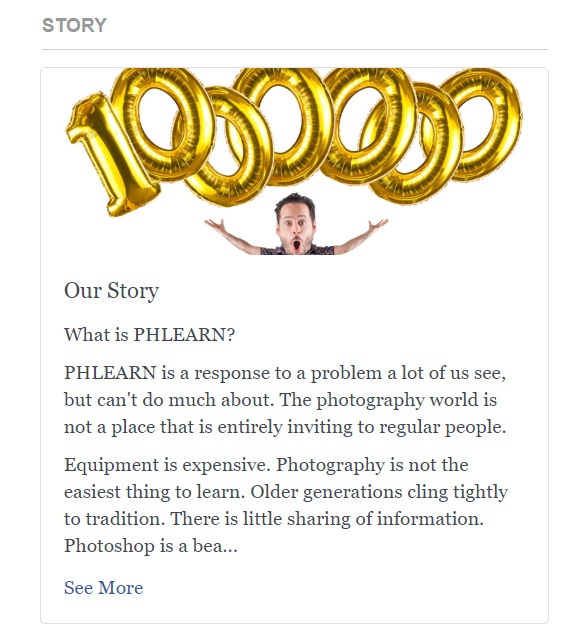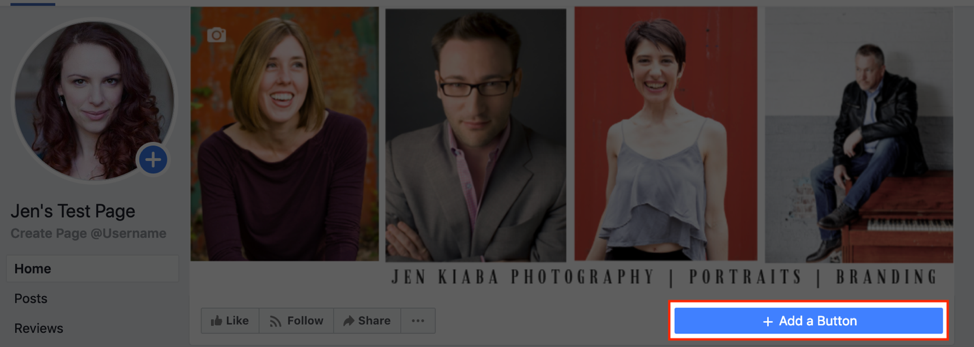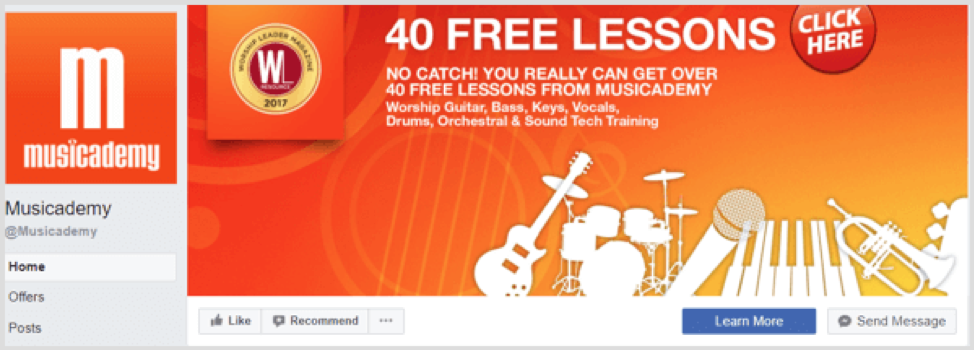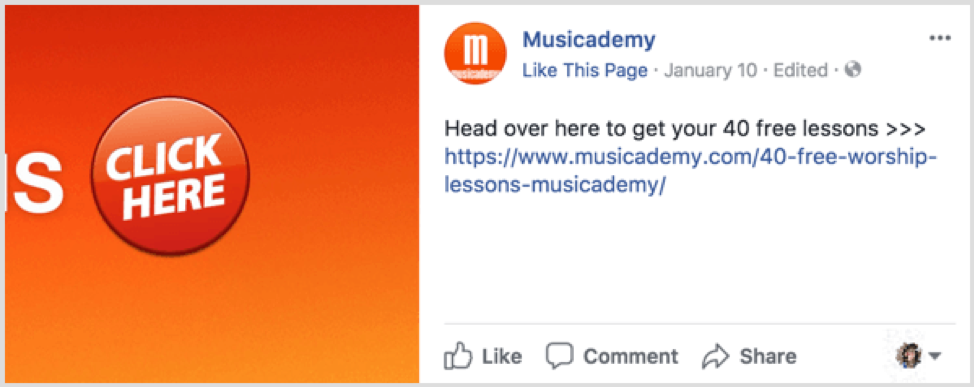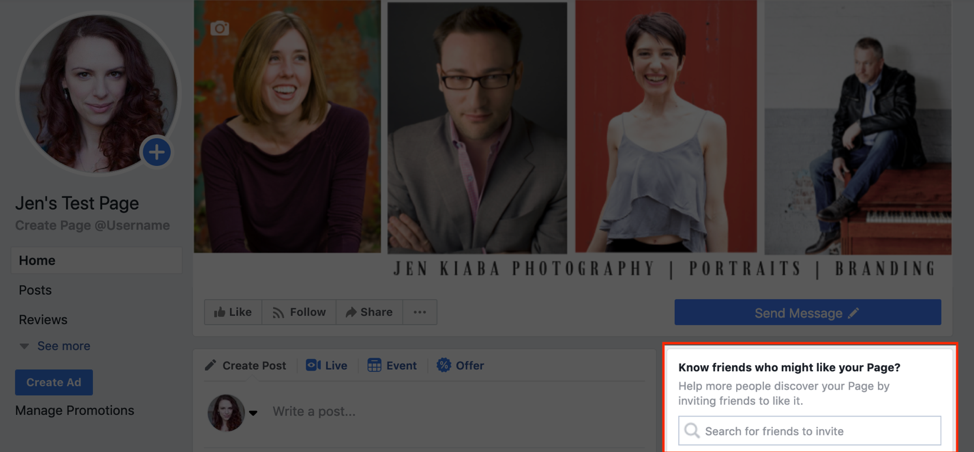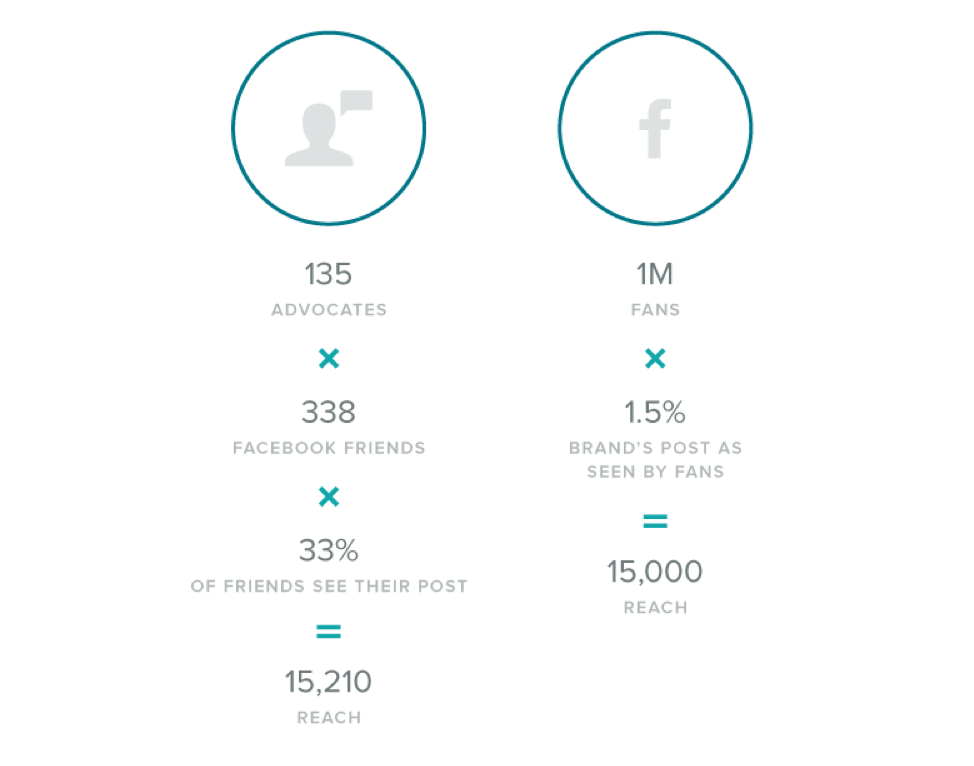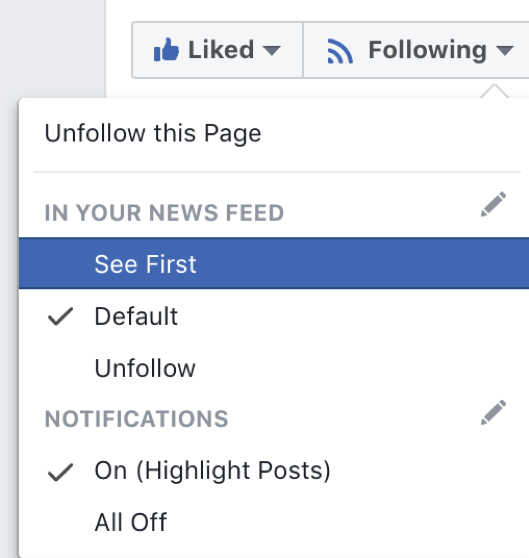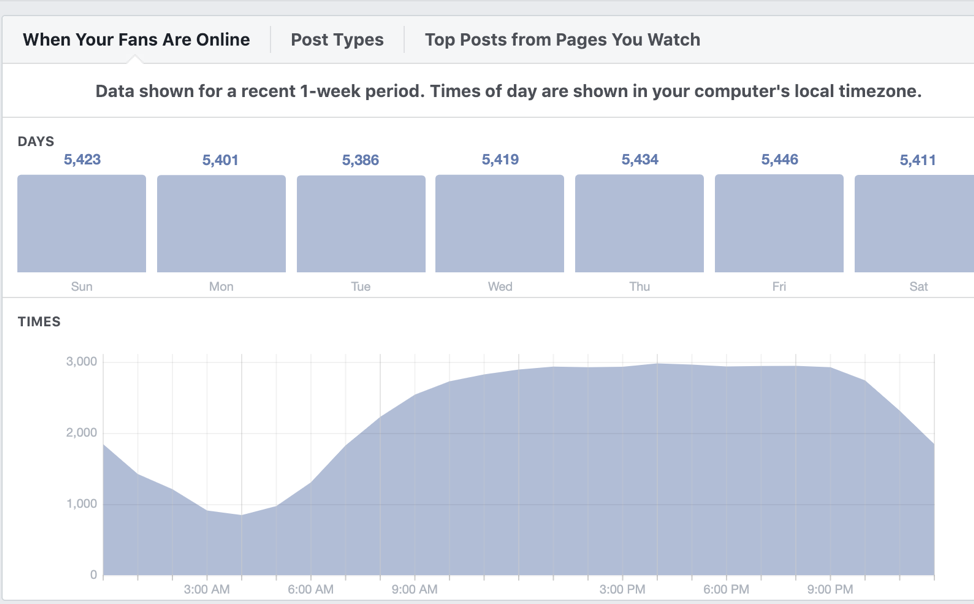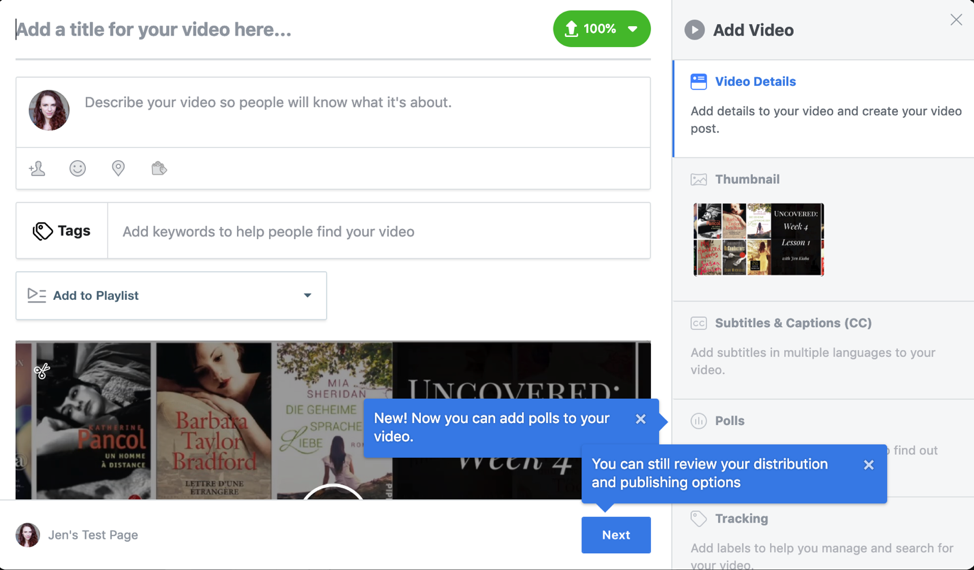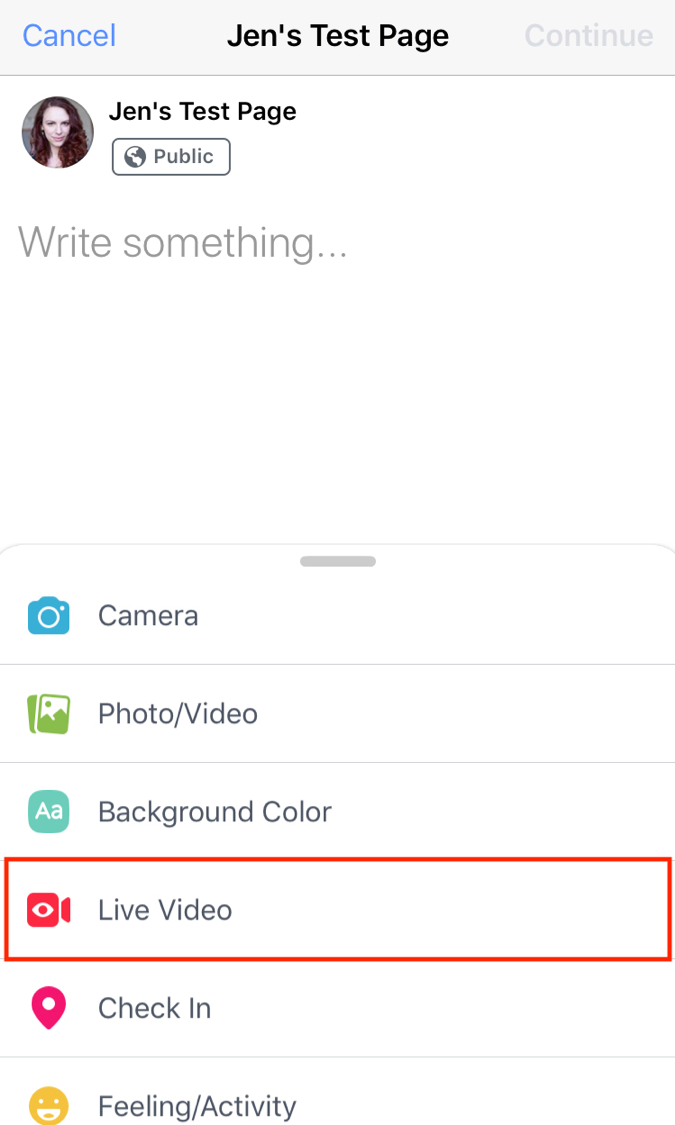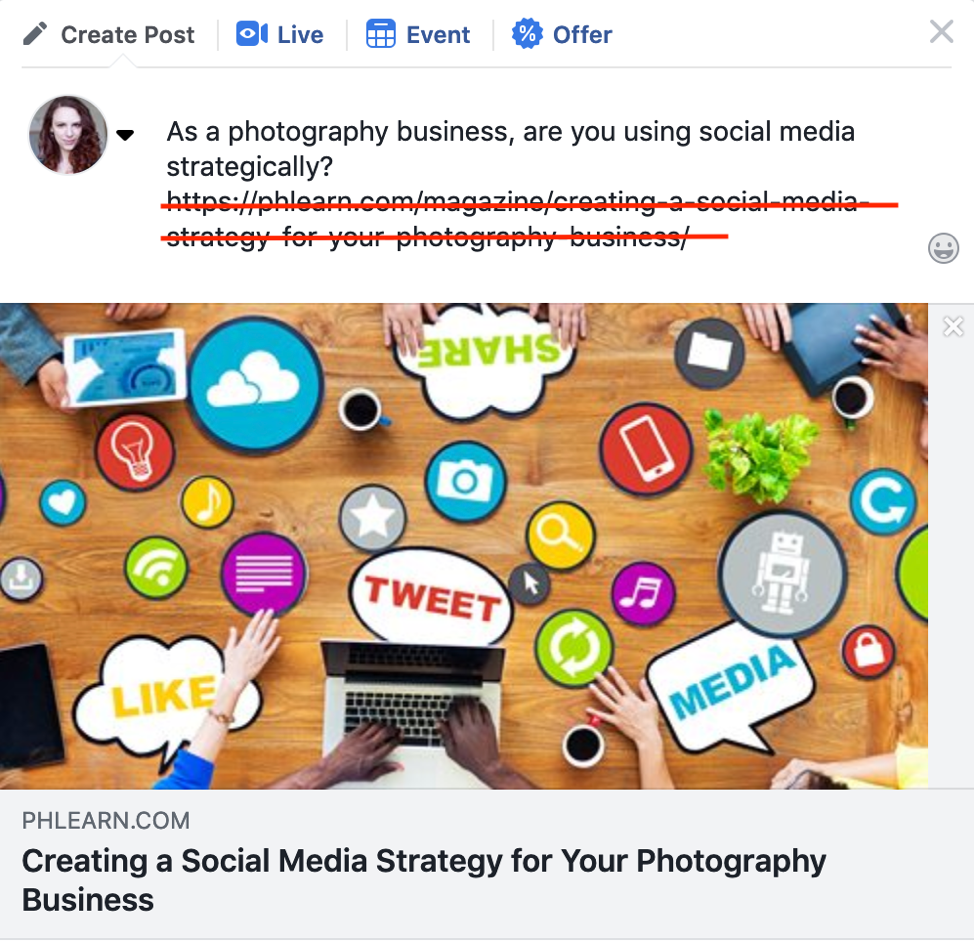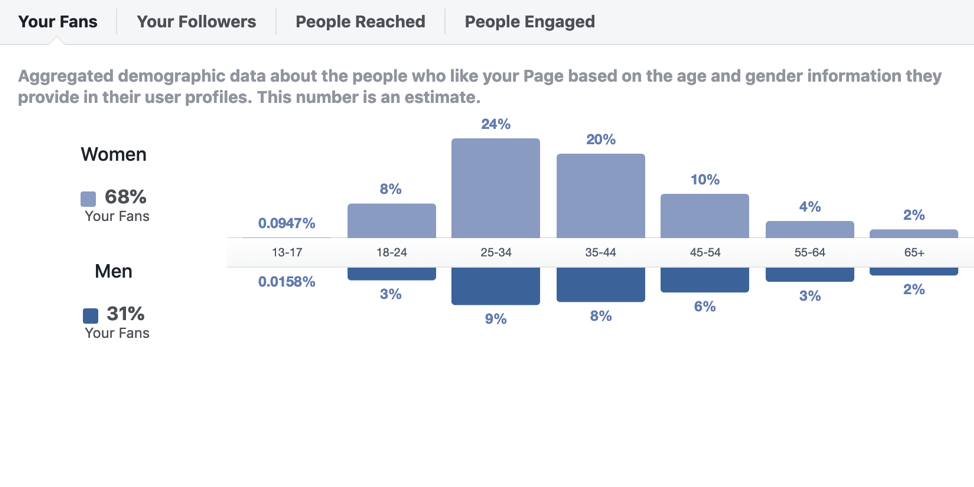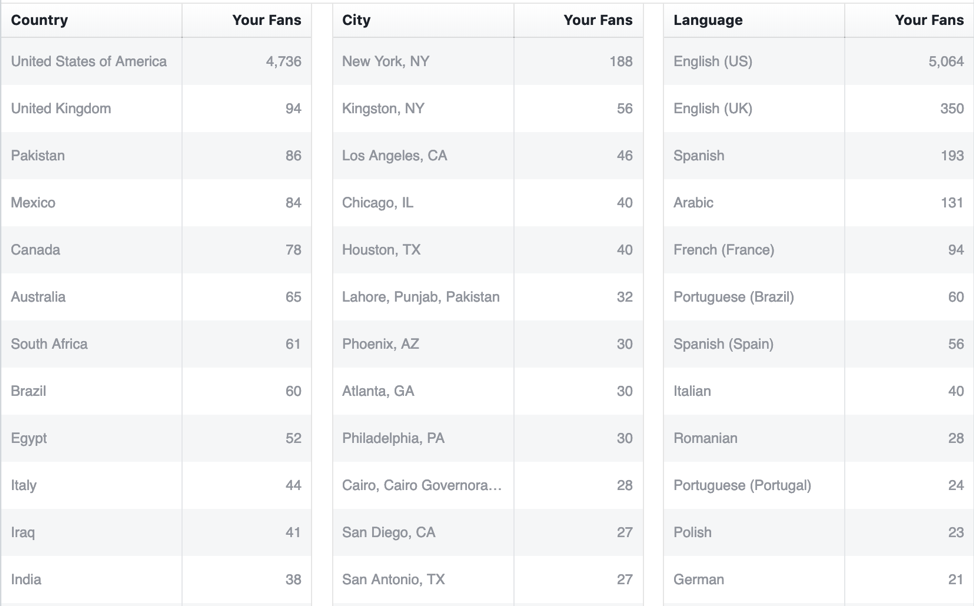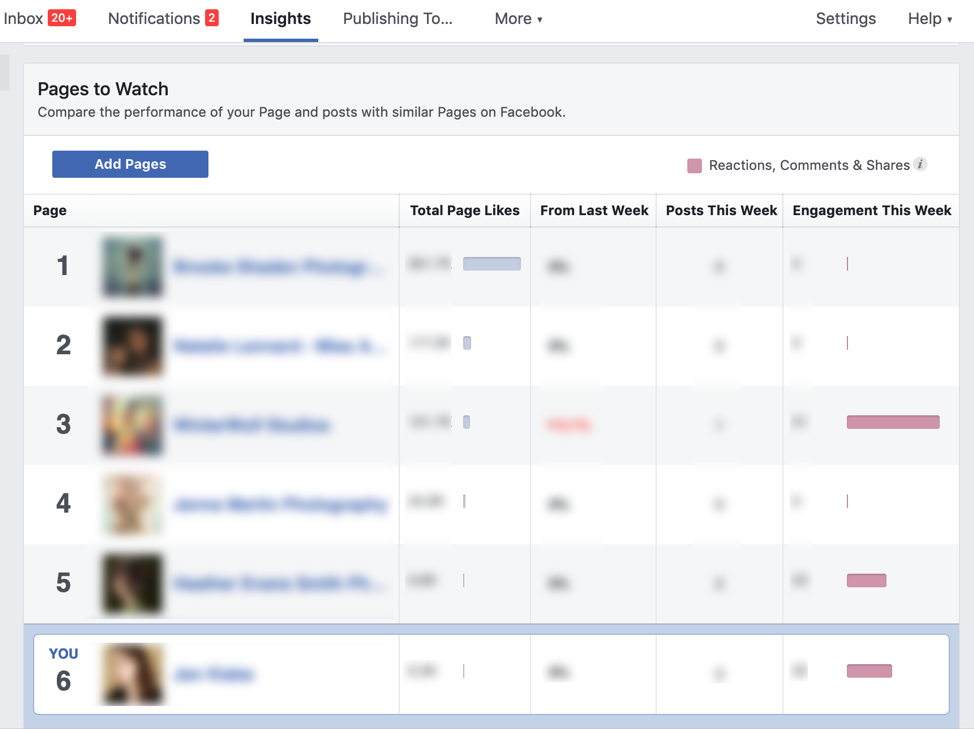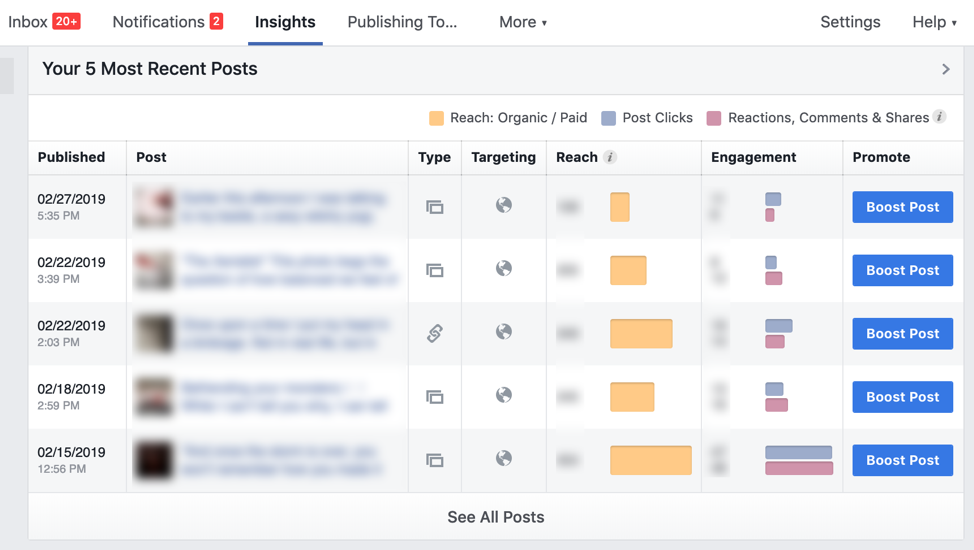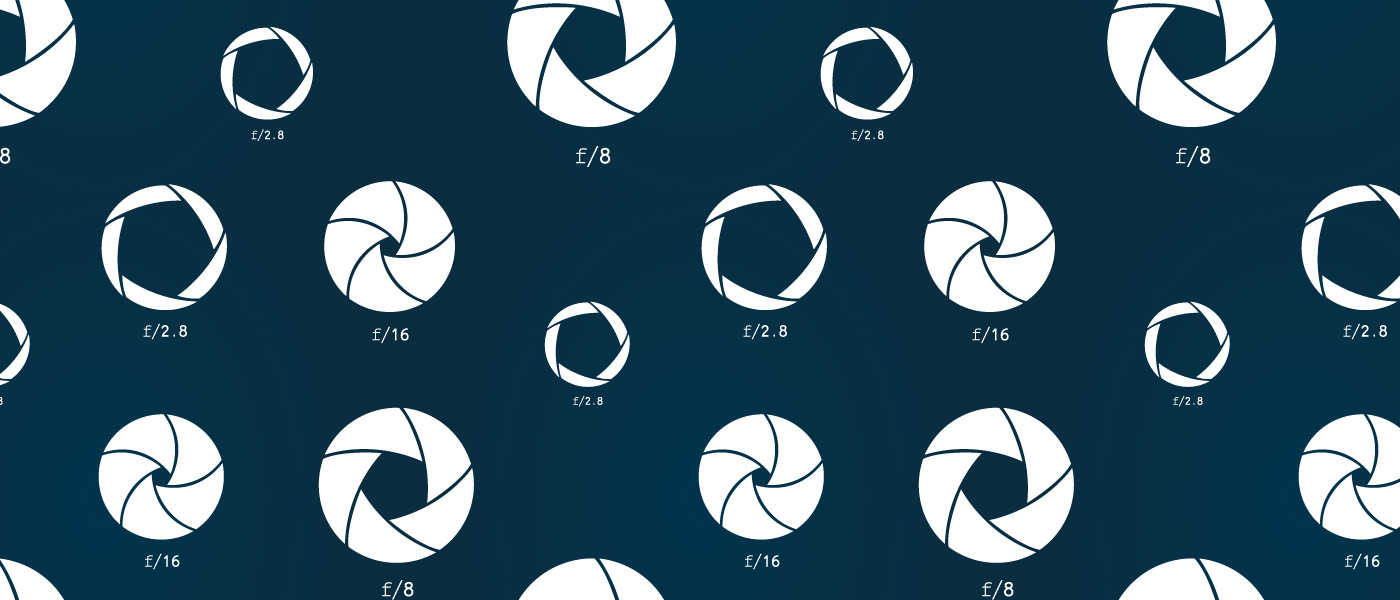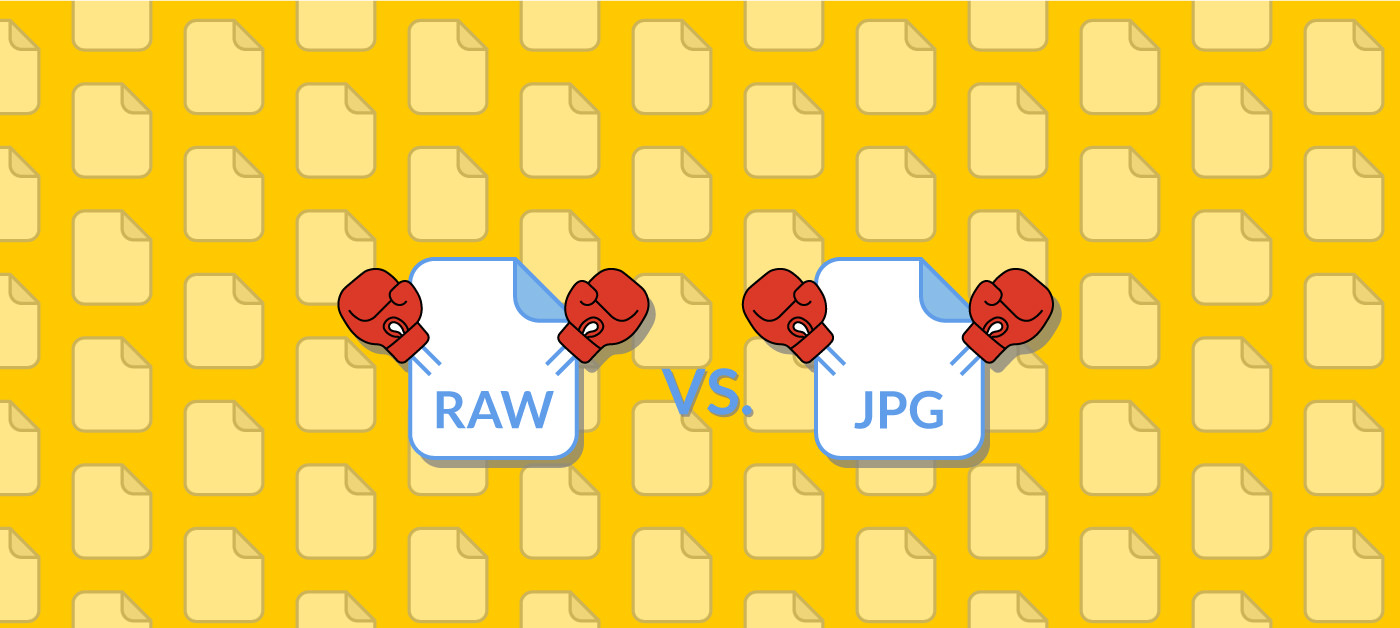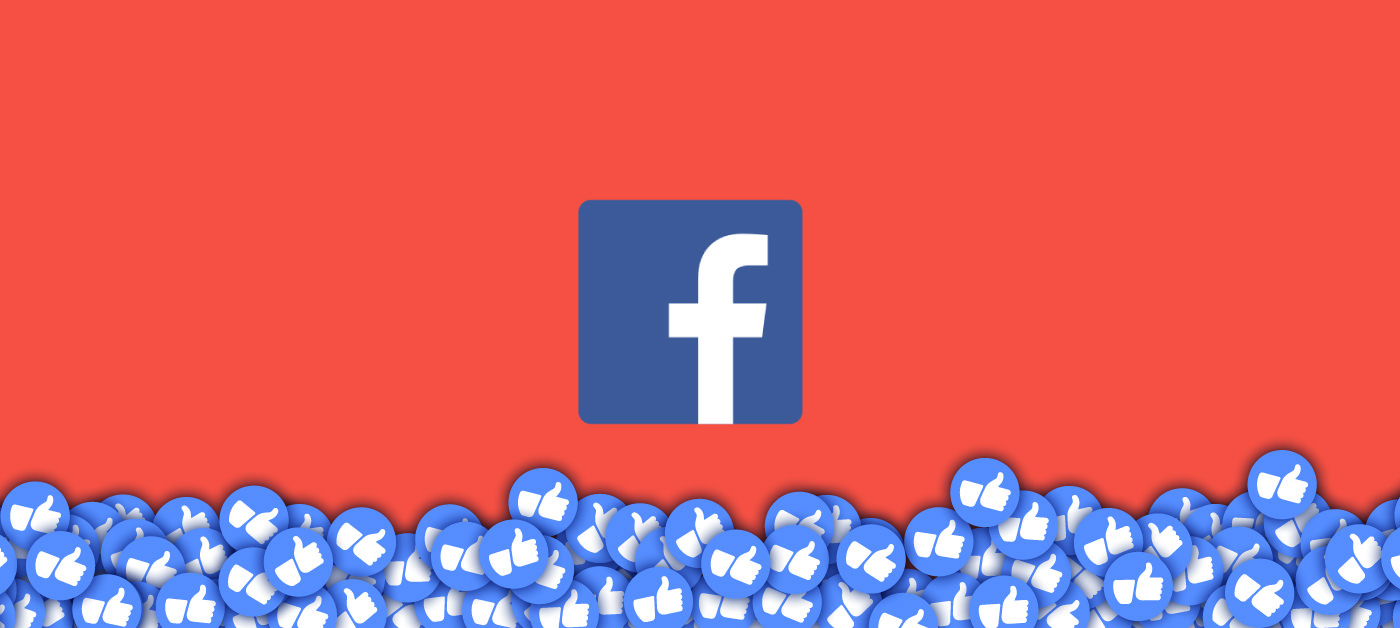
The Photographer’s Complete Guide to Facebook Marketing
In today’s internet, Facebook has become a force to be reckoned with. For many people, Facebook is their internet. It is where they get their news, catch up with their friends, go for entertainment and follow their favorite brands. To say every business should have a presence on Facebook is an understatement. Being active on Facebook is one of the best ways to promote your business via social media.
Although it was founded in 2004 as a way for college students to connect with one another, Facebook has grown to be the largest social networking site in the world. Boasting over two billion monthly active users, most users spend close to an hour every day interacting on a Facebook owned property. That hour is precious time that your business could use to win new customers.
Even if Facebook doesn’t end up being your main hub of social media activity, there are several reasons why using it can be beneficial for your business:
- It can give you amazing insights into your target audience and your competitors
- It can humanize your business and give you the ability to create a community around your brand
- And, as we discussed in our Local SEO article, there are also SEO benefits to being on Facebook!
Who Is on Facebook?
With over two billion monthly active users, your ideal client is very likely on Facebook. In fact, according to the PEW Research Center, over half of Americans in almost every age range, except people over 65, report that they are on Facebook.
According to Statista, as of 2018, the largest demographic of users on Facebook is located in the United States, followed by India and then Brazil. Within the United States, about a quarter of users fall into the 25-34 age group. This is good news for any business owner who is looking to target that age range.
Of course, there are demographics that are more difficult to reach on Facebook. For example, I teach photography for a non-profit that serves middle school and high school students. In our marketing funnel, it has usually been the teen demographic that we have made our first touch points with, and Facebook used to be a great platform to do so. However, with every passing year, fewer teenagers have Facebook profiles. So we’ve needed to pivot and rethink our strategy and touch points.
Does that mean we should abandon Facebook? Absolutely not! Because we know it’s ultimately the parents who are making the purchasing decision. With nearly 33 percent of Facebook users in the 35-54 age range, we know that we can still engage with this important demographic.
Similarly for your business, you will probably find that your target demographic uses Facebook as well.
Using Facebook Pages for Marketing
The basis for all marketing on Facebook is a Facebook Business Page. Pages have been around almost as long as the network itself and have become an important way for business owners to communicate directly with their ideal audience. They differ from a Personal Profile in a number of ways, but the most important perks are the insights and tools that Facebook gives you on a Business Page. You’ll be able to see data on the demographics of users who like your Page, which posts are most effective, some insights into your competitors, and more!
There are a number of business owners I’ve met who use a Personal Profile for their business. Many years ago, this used to be the norm, but now using a Personal Profile strictly for business actually goes against Facebook’s terms. If you create a personal profile for your business instead of a Page, Facebook can shut down your profile.
Setting Up and Optimizing Your Page
Having an optimized Facebook Profile is fundamental to the success of your marketing efforts on Facebook. We will walk you through starting a Page from scratch, but if you already have one follow along to find opportunities to optimize your Page!
If you have yet to set up a Business Page for your company, navigate to the dropdown menu in the top bar on Facebook and click Create Page.
You’ll be asked what kind of Page to set up, and you’ll likely want to choose Business or Brand.
Now name your Page and choose your category, both of which will help people find you in Facebook search results.
Once you’ve done this, you will be prompted to add a profile photo, a cover photo, a short description of your business, and a username to help people find your business.
Your Profile and Cover Photos
When you upload a profile photo, choose something that reflects your brand. If you are the face of your brand, then a use a professional headshot. If you use your company logo, make sure that it is legible when seen in the Newsfeed. Ideally, a Facebook profile photo size is 360 x 360 pixels. But, at minimum, they must be 180 x 180 pixels. Don’t worry if you don’t already have an image in a square format, you will be prompted to crop when you upload.
Your cover is also an opportunity to show off your business and products either in a photo or video. The optimal size for a Facebook cover photo or video is 820 x 312 pixels. You will be given the option to drag to reposition your cover image if it doesn’t fit the dimensions.
When designing your cover, remember that it is a great way to let visitors know about current seasonal offerings and promotions you have, or simply to give them an idea of your overall offerings.
Here is an example from Moo.com. Notice how they showcase their products in a fun and colorful way.
Here is another example from Design Aglow where they are showcasing products made with their templates:
For my example Page, I used a template from Canva to showcase examples of my own photography:
You may choose to use example images from your business as your profile and cover photos. Whatever you decide, make sure that new visitors understand what your business is about immediately.
Once you have uploaded your cover image, you can click on it to edit the description to include a sentence or two of text and a link. This way, if you are promoting something specific in your cover, visitors can seamlessly jump to the linked page.
Creating a Page Description
When you’re in the process of setting up a new Page, Facebook will prompt you to create a short description of your business. You will have 155 characters to write a few sentences about who you are, who you serve and the benefits to your client.
Your About Section
In order to access and edit all the information for your Business Page, navigate to the About section. This is accessible on the left-hand side of your Page under your profile photo.
The About section for your Page details everything about your business, and has vital information like your phone number, website, email, mission, and more. Listing this information helps you be found in both Facebook and Google searches. For local businesses, such as brick and mortar studios, having information about where you are located is also helpful and important!
Facebook has also rolled out the Our Story section to help showcase the personal side of your business. This is extra real estate to share a photo and speak in your own voice to tell a more personal story:
Add a Facebook Call to Action
While Facebook has a lot of great features to help you interact with potential clients, oftentimes the customer journey does not stop there and you will want to drive users to your website or have them get in touch with you. In order to give business owners an easy way to drive website traffic or messages, Facebook rolled out the Call to Action Button, which can be found under your cover:
This button allows users to book with you (using certain app integrations), message you, visit your website and more!
Use the call to action (CTA) that best fits the customer journey most of your clients go on. For example, if you know that most of your bookings come from your lead magnet and newsletter drip, then you can direct Facebook users to sign up under the Contact you section.
Using a CTA in your Facebook cover to entice users to sign up for your lead magnet is a great way to optimize your Page! Below is an example that Social Media Examiner shared from Musicacademy. Their cover image details the lead magnet they are offering and the Learn More button under the cover takes users to the page where they can sign up for the 40 free lessons.
Additionally, their image description also provides a link to the lead magnet:
So make sure to use your call to action strategically to help move prospects closer to booking with you!
Building Your Facebook Fan Base
Many marketers will tell you that the amount of “likes” you have on Facebook, or any social media platform, is a vanity metric. However, the larger your fan base on Facebook, the more people you have the potential to reach with your posts. Although Facebook has throttled the delivery of organic posts over the years, some business owners are still able to maintain engagement with their fans by being strategic about what they post (we will talk about this later).
The most important thing to do when you’re building your fan base on Facebook is to avoid the temptation to buy likes. While it might make that vanity metric look nice, most companies that sell likes are selling fake accounts. This means that while it may look like your fan base is growing, these people will never engage.
Having an engaged audience on Facebook is the most important “hack” anyone can give you for how to succeed on the platform. Again, we will go into this more in depth later, but for now know that it is better to have only a few hundred Page fans that engage regularly than it is to have thousands of fans that never engage.
So how do you find fans who are interested in what you post and willing to engage? There’s no secret sauce to building your fan base. The best ways to build your community is to optimize your Page, invite some initial friends or colleagues that you know would be interested in your Page, and then be consistently active and engaging on the platform.
So, fill out your About section as much as possible, and this will help Facebook understand your business better. When Facebook understands your business, it is able to suggest your Page to users who like similar businesses. For example, when I click “like” on the X-Rite Color Facebook Page, Facebook suggests Related Pages for me to check out based on my interest and the information Facebook has on X-Rite Color:
Invite friends to like your Page. Just make sure not to be spammy if and when you do:
You can also promote your Facebook Page on your website by using the Facebook Page Plugin and embedding a link and mini feed into your site. This way, your website visitors can keep up with you on social media.
Now let’s talk about what to post and how to be engaging.
What to Post on Facebook
Everything that you post on your Page has the potential to show up in your followers’ news feeds. However, as the news feed has gotten more crowded, competition has become stiffer. Facebook has given more preference to posts that are seen as relevant based on initial follower response. That means that posting helpful information for your fans, and posting when they are online, is key.
In our last post, we went deep into creating a social media strategy and content calendar based on your ideal client. In the past, the Facebook Algorithm has favored video, and in 2018 Facebook shifted towards showing more content from a user’s friends and family. While this may have meant that the power of the Business Page has the potential to shrink, by focusing on creating content that people care about and engage with, you can work on creating staying power in the news feed.
According to Facebook, the platform is looking to highlight content that creates meaningful interaction:
“Pages making posts that people generally don’t react to or comment on could see the biggest decreases in distribution. Pages whose posts prompt conversations between friends will see less of an effect.”
Some ideas to stay visible and relevant in the news feed:
- Still use video, but use it strategically and prompt a discussion with your followers
- Take advantage of live video
- Facebook says that live videos, on average, get six times as many interactions as regular videos
- Post tagged photos more, post links less
- Facebook prefers content that lives on Facebook, not content that will drive users off of the platform
- Post content that is meaningful to your local community by sharing your events and relevant updates
- Utilize your brand advocates
- If you have a referral program, incentivize social sharing. According to Sprout Social, people are 16 times more likely to read a post from a friend than a brand. And even a few advocates can help drive large reach:
- If there is something newsworthy from your industry or community, share that
- You can also occasionally encourage followers to select to see updates from your page first:
When to Post to Facebook
Conventional wisdom has held that people are on Facebook the most during work hours. A 2018 study by Sprout Social of the best times to post on Facebook back this data up, showing consistent engagement between 9am and 5pm Monday through Friday, with higher spots of engagement between 10am and 2pm on weekdays.
Your audience might be more specific, and you may want to determine a custom schedule for your posting. In a future post we will discuss how to dive into your social media analytics, but you can explore the data in your Facebook Insights, which are accessible at the top of your Page:
We can see that on my Page, my fans are on Facebook pretty consistently from 9am to 9pm:
Until you build up enough of a fan base to get some meaningful data, post regularly and keep an eye on the times that your fan base seems the most active. Before work, after work and when people are on their lunch breaks are always good bets! Think about the kinds of content that you can post that will educate, inspire or create a connection with your fan base. Posting promotional content occasionally is fine, but too much will simply seem like spam and is the fastest way to get people to unfollow you.
Facebook Post Types
Now that we know the overall content mix we want to share and when, let’s dive into some of the top types of Posts Facebook makes available to us.
Facebook Images
One of the most important and most highly used is an Image post. According to Buzzsumo, Facebook posts with images see more than twice the engagement than those without. Remember, it’s a crowded news feed out there and there is a lot of vying for your audience’s attention. So having eye-catching visuals is one of the best ways to stand out.
The recommended image size for the Facebook News Feed is 1200px by 630px. No matter the size, make sure to keep a 1.9:1 ratio.
To post a photo (or a video), click on the Photo/Video button when you’re writing your post to attach an image.
Facebook Video
As we discussed, video is a great way to engage with your audience and the Facebook algorithm has shown some favor to video posts because of its high engagement. In fact, a few years back, a Facebook executive predicted that all content on the platform would be video based by 2021. So, if you have videos that share stories about your business, share them with your fans!
You upload a .mp4 or .mov video the same way that you would a photo. It will take some time for Facebook to process the video and then you will be prompted to title your video, describe it and add tags. You will also be able to add subtitles and captions if you have those available.
Facebook Live
Facebook Live is a great way to broadcast yourself to your fans in video format, and you will be able to stream to your Page via your smartphone. Fans will be notified and be able to join you and ask questions throughout your broadcast. In order to broadcast, use the Facebook App on your smartphone.
If this is your first time using Facebook Live, you will be prompted to give Facebook access to your camera and microphone. Then tap to add a description. You can also change the privacy setting of your broadcast. You can broadcast publicly, to just your friends, or just to yourself. If you’re testing Facebook Live for the first time, using “only me” is a great option because then it won’t show up in your fans’ news feeds. When you’re ready, click the blue Start Live Video button.
Engage with viewers by asking them their questions and sharing some of their comments. Reintroduce yourself and your topic every few minutes for new viewers by saying something like “If you’re just joining us, I’m {your name} and today we’re talking about {live video topic}.”
When you’re done broadcasting, just click on Finish and your video will be saved to your Page in the Videos section.
Facebook Links
As we discussed, Facebook likes to keep users on the platform. But that doesn’t mean you shouldn’t share relevant links that your audience would appreciate. Blog posts, links to your lead magnet and articles that your audience would find relevant are all great content to share.
To post a link, simply drop it in the area where you would write a post. Facebook will automatically pull the information from your link and populate a preview of the content. You can then delete the link from your text to make it look cleaner if you like:
Creating Your Facebook Marketing Strategy
As we discussed in our social media strategy article, the core of any marketing strategy is knowing who your audience is. Creating an audience persona is the most important place to start. Once you know the ideal persona that you want to engage with, you will more easily understand what to post.
As you gain fans, you can use your Facebook Insights to see some demographic information on them like their age, gender and where they are from:
Once you have identified who your ideal client is, you can research your competition to see how their content is stacking up. Look for ways to improve upon their content mix, as well as any opportunities they might be missing. Using a critical eye, evaluate your competitors page for:
- How often they post
- The kinds of post they use
- The likes, comments and shares they get on their posts
- How the business owner engages with their fans
You can also watch your competitors’ Pages in your Facebook Insights to see how their Page is performing:
Then use your competitive audit and your own content audit to help fill in a calendar of posts to stay engaged with your fan base. In our previous social media article, we highlighted Hootsuite’s recommended content mix:
- 1/3 of your content promotes your business or generates leads
- 1/3 of your content comes from other sources that align with your business
- 1/3 of your content engages with followers directly, either through answering questions, responding to comments, or re-posting user-generated content
As you begin to post, your Facebook Insights will be a great way to gather information about how your content performs with your audience. As mentioned before, we will do a deep on Analytics and Insights in a future article. But for now, as you post, take some time to explore how each of your posts is doing. Scroll down under your Insights tab and Facebook will give you the Reach and Engagement numbers for your most recent posts:
Use this information to test, learn and tweak your engagement and posting strategy going forward.
Driving Sales with Facebook
With the algorithm changes implemented in 2018, it may mean that Facebook is working harder to keep users from clicking away. The result of that may mean that business owners posting links to outside content on Facebook could find their post reach throttled. So focusing on creating engaging content that keeps users on Facebook could be key to organic reach. But what about driving bookings and sales?
As we discussed in our previous social media article, most brands find success driving awareness and engagement with social media. While sales do happen on Facebook, social media is generally not the primary driver of revenue for businesses. The sales that are made on the platform are usually the result of fans who are already brand-aware and have engaged significantly in the past.
We’ll also talk in depth about Facebook Ads in a forthcoming article, because with these newer algorithm changes it may be that in order to stay in front of their fans, more and more businesses will have to pay for news feed space. However, algorithm changes aside, Facebook Ads can be a fantastic way to help find new fans and move current fans through the funnel towards a sale.
Paying to promote your lead magnet and encourage newsletter sign-ups is a great way to help fill your lead pipeline and use the immense power of Facebook to drive future bookings. What Facebook Ads are not successful at is converting cold traffic into bookings. So make sure to read up on lead magnets and email marketing before spending any money on advertising on Facebook!
With over two billion monthly users, Facebook is the marketing behemoth that cannot be ignored. In order to be seen and to ignite the algorithm to deliver your posts to your fans, you need to be engaging and genuinely helpful. Seek to develop an authentic relationship with your fans and foster community with them. Listen to what they are asking for and seek to deliver content that answers that need.
Developing a community minded strategy on Facebook can be a great way to develop awareness and engagement for your business, which eventually helps to drive leads and bookings!
For in-depth info on using other social media for your marketing efforts, check out these resources from PHLEARN:
